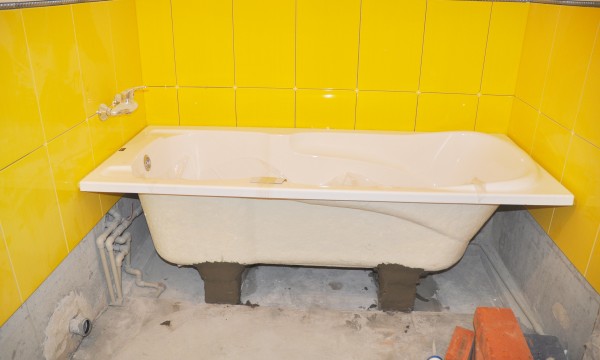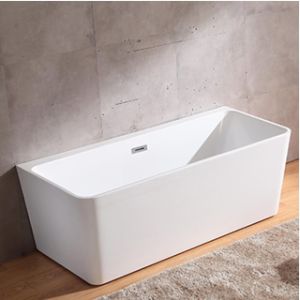The content in the next paragraphs about How to Install a Bathtub Yourself is without a doubt informative. Don't miss out on it.

Setting up a bath tub isn't exactly brain surgery, yet it does call for solid plumbing, carpentry, and also in some cases, tiling skills. Replacing an old tub with a brand-new one is also a moderately tough job. If the old bathtub is readily available, the job can relocate easily; if you have to open a wall surface to remove the old tub as well as place the brand-new bath tub, the job is much harder. In either case, the task is within a residence handyman's abilities, although you will need a helper to move out the old tub and set in the new one. Make certain you have qualified yourself for the job and are comfortable attempting it. Rather than hiring a contractor to take over a halfway-completed project, it is much better to think about utilizing one before you start. Opportunities are you might require a specialist plumber to make tube links.
This short article will assist you set up a new tub in your shower room if you have already purchased a new tub and do not need to alter the arrangement of your previous water supply pipes.
Your devices as well as material checklist should comprise the following:
- New Bath tub
- Hammer
- Pipeline Wrenches
- Prybar
- Shatterproof glass
- Degree
- Pliers
- Adjustable Wrench
- Putty Knife
- Screwdriver
- Cold Knife
- Measuring tape
- Pipe Caps
Getting ready for the Installation
Firstly, the sustaining framework supplied with the bath should be fitted (if required) according to the maker's directions. Next, fit the taps or mixer to the tub. When fitting the faucet block, it is necessary to make certain that if the tap comes with a plastic washing machine, it is fitted between the bath and also the faucets. On a plastic bath, it is also reasonable to fit a supporting plate under the faucets unit to avoid pressure on the bathtub.
Fit the adaptable tap connectors to the bottom of the two faucets utilizing 2 nuts as well as olives (sometimes provided with the tub). Fit the plug-hole outlet by smearing mastic filler round the sink electrical outlet hole, and then pass the electrical outlet with the hole in the bath. Make use of the nut supplied by the supplier to fit the plug-hole. Take a look at the plug-hole outlet for an inlet on the side for the overflow pipeline.
Next off, fit the end of the adaptable overflow pipeline to the overflow outlet. Afterwards, screw the pipe to the overflow face which need to be fitted inside the bathroom. See to it you utilize all of the provided washers.
Attach the trap to the bottom of the waste electrical outlet on the tub by winding the thread of the waste electrical outlet with silicone mastic or PTFE tape, and screw on the catch to the outlet. Attach the bottom of the overflow tube in a comparable manner.The bath must now prepare to be fitted in its last setting.
Removing Old Touches
If you require to replace old faucets with new ones as a part of your installment, then the first thing you should do is detach the water supply. After doing so, activate the taps to drain pipes any water staying in the system. The procedure of eliminating the existing faucets can be quite bothersome as a result of the restricted gain access to that is frequently the case.
Use a container wrench (crowsfoot spanner) or a tap device to reverse the nut that connects the supply pipelines to the taps. Have a fabric all set for the remaining water that will certainly originate from the pipes. As soon as the supply pipes have been eliminated, use the same device to loosen up the nut that holds the taps onto the bath/basin. You will need to quit the solitary taps from transforming throughout this process. When the faucets have actually been gotten rid of, the holes in the bath/basin will have to be cleaned of any kind of old sealing compound.
Prior to going on to fit the new taps, contrast the pipeline links on the old taps to the new faucets. If the old faucets are longer than the brand-new faucets, then a shank adapter is required for the new faucets to fit.
Installing the Tub
Making use of both wood boards under its feet, position the bathtub in the needed setting. The wood boards are helpful in uniformly spreading out the weight of the bath tub over the location of the boards as opposed to focusing all the weight onto four little factors.
The following objective is to make sure that the bath tub is leveled all round. This can be attained by inspecting the level and also readjusting the feet on the bath tub until the spirit level reads degree.
To mount faucets, fit all-time low of the furthest versatile faucet connector to the ideal supply pipe by making a compression join; then do the very same for the other faucet.
Switch on the supply of water as well as inspect all joints as well as new pipework for leaks as well as tighten them if necessary. Load the bath tub as well as also check the overflow outlet and the normal outlet for leaks.
Finally, fix the bath paneling as described in the manufacturer's instruction manual. Tiling and sealing around the bathtub ought to wait up until the bath tub has actually been made use of at the very least when as this will settle it right into its last setting.
Suitable New Taps
If the tails of the new taps are plastic, then you will certainly require a plastic adapter to avoid damages to the string. One end of the port fits on the plastic tail of the tap and the other end gives a link to the existing supply pipes.
If you need to fit a monobloc, after that you will certainly need lowering couplers, which connects the 10mm pipeline of the monobloc to the standard 15mm supply pipeline.
Next off, place the faucet in the installing hole in the bath/basin making certain that the washers remain in area between the faucet and the sink. Safeguard the tap in place with the manufacturer supplied backnut. Once the faucet is safely in position, the supply pipelines can be attached to the tails of the faucets. The taps can either be attached by using corrugated copper piping or with normal faucet ports. The former kind needs to be attached to the tap finishes initially, tightening up just by hand. The supply pipelines can later be connected to the other end. Tighten up both ends with a spanner after both ends have actually been attached.
Tiling Around the Bathtub
In the location where the bath meets the ceramic tile, it is necessary to seal the joins with a silicone rubber caulking. This is important as the fitting can relocate sufficient to break a stiff seal, triggering the water to pass through the wall surface in between the bathroom as well as the tiling, bring about problems with dampness and feasible leakages to the ceiling below.
You can select from a variety of coloured sealers to blend in your fixtures and also installations. They are marketed in tubes as well as cartridges, and can securing gaps as much as a width of 3mm (1/8 inch). If you have a larger gap to fill up, you can fill it with twists of drenched paper or soft rope. Keep in mind to always fill up the bathtub with water before securing, to enable the movement experienced when the tub is in usage. The sealant can crack relatively early if you do not take into account this motion before securing.
Alternatively, ceramic coving or quadrant floor tiles can be used to border the bath or shower tray. Plastic strips of coving, which are easy to use and reduce to dimension, are also quickly offered on the market. It is advisable to fit the floor tiles utilizing waterproof or water resistant glue and also grout.
Bathtub Installation
How Important Is A Bathtub To Your Home?
High-quality baths, showers, and other bathroom updates are necessary when considering a smart investment in your home. It’s a room that you go to every day and one that is constantly being used by guests.The bathroom is one of the top trafficked rooms in a home and also one of the most valuable in terms of home resale.
Install Piping Before Tub
You will be using your existing drain and waste vent system, but pipes required include the hot and cold water supply lines and a pipe leading to a shower head. A mixing valve and shower head are also needed. Air chambers may be required.
Position the Tub
Lower the tub into place so that the continuous flange fits against the wall studs and rests on 1’x4' or 2’x4' supports. Anchor the tub to the enclosure with nails or screws inserted through the flanges into the studs.
NOTE: Remember, bathtubs and shower stalls may require support framing. A bathtub filled with water is extremely heavy, so check building codes and framing support before installing the tub.
Assemble Drain Connections
Assemble the bathtub drain connections by connecting the tub overflow with the tub drain above the trap, not beyond it. The trap will have a compression fitting that screws over the arm of the overflow assembly.
Place a Pipe For the Shower Head
First, locate a brass female threaded winged fitting and attach it to a framing support via a screw or a nail. Then run a pipe up the wall for the shower head. Sweat or solder the other side of the brass fitting to the top of the pipe.
Attaching Hot and Cold Water Lines
Attach your water lines for both hot and cold by sweating these directly into the hot and cold ports of the mixing valve. The mixing valve will be how water enters the tub’s system, not by the pipes themselves.
Install the Spout
Extend a piece of 1/2 inch pipe, or whichever length is specified in the manufacturer’s instructions, for the tub spout. Sweat on a male threaded fitting at the end of the pipe or use a brass nipple of the proper length and a 1/2 inch cap.
NOTE: At this point you should have your rough-in plumbing work inspected before proceeding further.
Check For Leaks
Restore the water pressure and check the drain connection and the supply pipes for any sign of leaking.
estore the Bathroom Wall
Replace the wall with moisture-resistant drywall as a base for your wall covering. Seal the joints between the wall and your new tub with silicone caulk as protection against water seepage.
https://www.berkeys.com/2016/12/02/bathtub-installation-dallas/

I recently found that blog posting on A Step-by-Step Guide to Installing a Bathtub when doing a search on the internet. Enjoyed reading our posting? Please share it. Let another person find it. Thanks so much for going through it.
This Post
Comments on “DIY Tub Installation.”